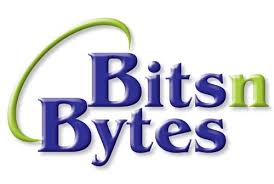 5. What is meant by high-order and low-order bytes?
5. What is meant by high-order and low-order bytes?
We generally write numbers from left to right, with the most significant digit first. To understand what is meant by the “significance” of a digit, think of how much happier you would be if the first digit of your paycheck was increased by one compared to the last digit being increased by one.
The bits in a byte of computer memory can be considered digits of a number written in base 2. That means the least significant bit represents one, the next bit represents 2´1, or 2, the next bit represents 2´2´1, or 4, and so on. If you consider two bytes of memory as representing a single 16-bit number, one byte will hold the least significant 8 bits, and the other will hold the most significant 8 bits. Figure shows the bits arranged into two bytes. The byte holding the least significant 8 bits is called the least significant byte, or low-order byte. The byte containing the most significant 8 bits is the most significant byte, or high- order byte.
23-1 (1)
6. How are 16- and 32-bit numbers stored?
A 16-bit number takes two bytes of storage, a most significant byte and a least significant byte. If you write the 16-bit number on paper, you would start with the most significant byte and end with the least significant byte. There is no convention for which order to store them in memory, however.
Let’s call the most significant byte M and the least significant byte L. There are two possible ways to store these bytes in memory. You could store M first, followed by L, or L first, followed by M. Storing byte M first in memory is called “forward” or “big-endian” byte ordering. The term big endian comes from the fact that the “big end” of the number comes first, and it is also a reference to the book Gulliver’s Travels, in which the term refers to people who eat their boiled eggs with the big end on top.
Storing byte L first is called “reverse” or “little-endian” byte ordering. Most machines store data in a big- endian format. Intel CPUs store data in a little-endian format, however, which can be confusing when someone is trying to connect an Intel microprocessor-based machine to anything else.
A 32-bit number takes four bytes of storage. Let’s call them Mm, Ml, Lm, and Ll in decreasing order of significance. There are 4! (4 factorial, or 24) different ways in which these bytes can be ordered. Over the years, computer designers have used just about all 24 ways. The most popular two ways in use today, however, are (Mm, Ml, Lm, Ll), which is big-endian, and (Ll, Lm, Ml, Mm), which is little-endian. As with 16-bit numbers, most machines store 32-bit numbers in a big-endian format, but Intel machines store 32-bit numbers in a little-endian format.